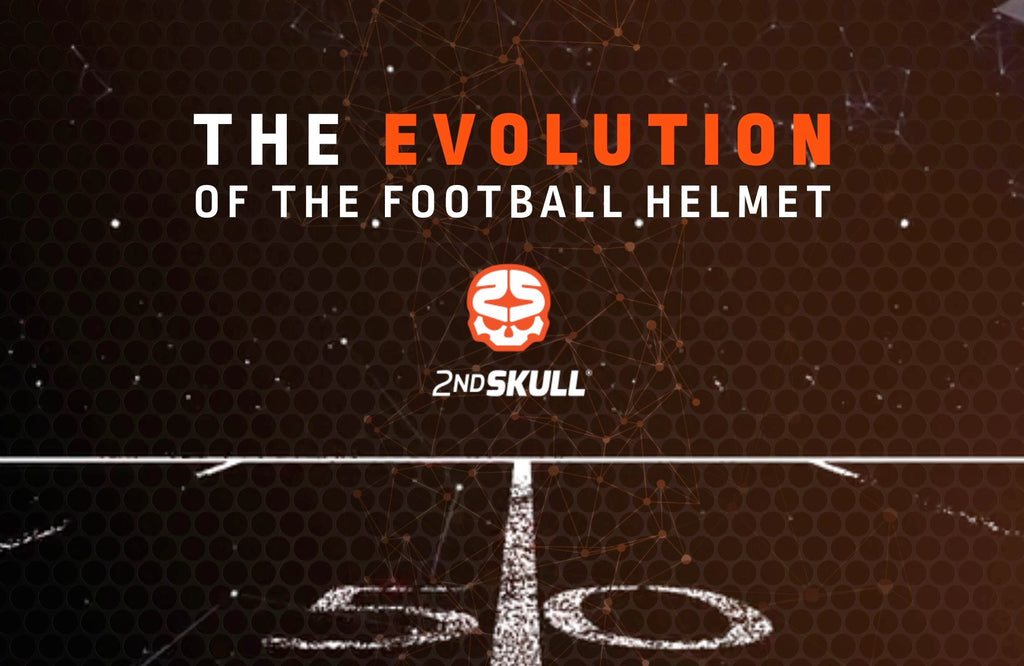Evolution of Football Helmets
 Every Sunday during football season the excitement and anticipation build as we wait for kickoff. Through sprains, twists, and breaks, it’s no doubt that all of the NFL teams leave it all on the field, playing their hardest every play, every game, and every season.
Every Sunday during football season the excitement and anticipation build as we wait for kickoff. Through sprains, twists, and breaks, it’s no doubt that all of the NFL teams leave it all on the field, playing their hardest every play, every game, and every season.
Although it may seem that all too many injuries are reported year after year, the evolution of the football helmet has come a long way since its introduction to the field, and so too have the way athletes and committee members view the seriousness of head injuries. NFL reporting showed a 24 percent decrease in concussions during the preseason and regular season, from 281 in 2017 to 214 in the 2018 season. The drop was particularly noteworthy in the regular season when the number of diagnosed concussions went from 190 in 2017 to 135 in 2018 -- a 29 percent decrease.
Football helmets are the only thing protecting player’s heads from hard hits, concussions, and other head injuries during a game. A football helmet can be defined as a piece of protective equipment used mainly in American football and Canadian football. It consists of a hard plastic shell with thick padding on the inside, a face mask made of one or more plastic-coated metal bars, and a chinstrap.
However, when football helmets were first invented, this wasn’t the case.
The First Football Helmet
The first use of football headgear dates back to 1869 when George “Rose” Barclay, the Lafayette College halfback, started to use straps and earpieces to protect his ears. There is no documentation on who actually invented the football helmet. However, some sources credit James Naismith, while others credit U.S. Naval Academy Midshipman, Joseph M. Reeves, who had a protective headpiece made out of moleskin in the 1893 Army-Navy game.
The Initial Adoption of Football Helmets
Helmets were widely used in football during the 1920s. These helmets consisted of leather with some padding on the inside but provided little protection. While the helmet was developed to protect the head, these helmets lacked face mask and as a result, injuries were still common.
It wasn’t until 1939 when the first plastic helmet became available. The Riddell Company of Chicago manufactured the first plastic helmet, believing it was safer than the leather options that were being used on the field. The plastic frame was able to hold its shape when collision occurred and included more padding and cushion for safety. The plastic helmet also included a plastic face mask, protecting the entire head.
The Evolution of Football Helmets in the NFL
In the mid-1940s, leather helmets were required in the NFL. It wasn’t until 1949 that the NFL officially adopted the plastic helmet, ending the leather helmet era. By the mid-50’s, single face bars were added to the helmets, and the first appearance of the radio helmet was introduced.
Through the 60’s, and 70’s, Riddell continued to innovate and improve the football helmet protection and design. By the 1980s, Riddell had become an icon with its classic helmet silhouette with a circular earhole, clean face mask lines, and rounded dome.
In 2002, in response to the study of head injuries, Riddell developed a new helmet designed called the Revolution. The revolution was the first significant remodel in 25 years, and as of 2007, Riddell has sold 750,000 helmets. In 2007, due to the demand for a safer football helmet, Schutt Sports announced the arrival of a next-generation helmet, the Schutt ION 4D.
Today’s Football Helmet & Enhancing Protection
Today, NFL athletes are allowed to choose their own helmets for any particular reason. It can be for protection, nostalgia, or purely aesthetic. However, all helmets have to be approved by the National Operating Committee on Standard for Athletic Equipment (NOCSAE).
While the standard and protection of football helmets have come a long way since its inception, players who prioritize their safety often look for ways to add an additional layer of support. Technology has progressed in a way that enables companies like 2nd Skull to help empower athletes by adding additional protection to the most critical part of the human body.
Our newly launched 2nd Skull Pro Cap was designed in collaboration with a grant and support from the NFL, made with extreme impact protection material. The light-weight, breathable design offers additional protection without adding bulk or discomfort under a helmet.
You don’t have to be a pro to add an additional layer of protection under your football helmet.


